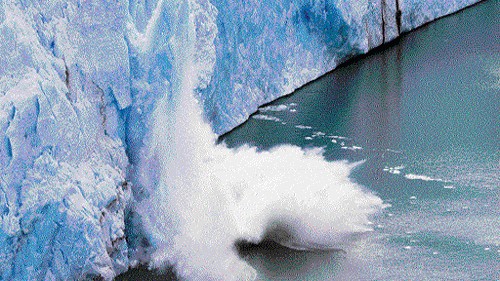
Representative image for glaciers.
Credit: Reuters File Photo
New Delhi: The melting of glaciers in a warming climate exposes new ground that are then colonised by invasive species, new research has found.
The study, conducted by UK-based researchers, looked at how living organisms colonise new ground laid bare by retreating glaciers, called 'forelands', on the British Overseas Territories.
Surveying glaciers on the island of South Georgia in the Atlantic Ocean, the researchers found that invasive species -- one of the main causes of the ongoing biodiversity crisis -- will likely spread as fast as the glaciers are retreating.
They explained that similar to cold regions around the world, climate change is melting many of the sub-Antarctic island's glaciers, exposing large areas of newly uncovered bare ground.
This exposure of bare ground is followed by the arrival of pioneer plants, which remain low on the ground to maximise sunlight intake and are known to grow quickly.
These plant species 'colonise' the area by 'progressively covering more ground' and 'increasing number of species', the team led by the UK's Durham University said.
Native plant species apart, exotic plants and invertebrates are also taking advantage of the newly-uncovered bare ground, the researchers found.
They were further 'surprised' to see that two plant species originating from temperate regions of the Northern Hemisphere had colonised the sites faster than any other species.
The two species -- annual meadow grass and mouse-ear chickweed -- "are widespread on South Georgia and have successfully invaded most islands in the sub-Antarctic," the researchers wrote in their study, which has been published in the Neobiota journal.
The team also wrote that the temperate plant species are 'more abundant in recently rather than in older deglaciated sites, indicating that these species are effective pioneers on glacial forelands along South Georgia's coast'.
The flowering specimens of the mouse-ear chickweed were found in areas deglaciated less than five years prior to the survey, they noted.
Even as the results indicate a fast spread of invasive species on the island, the researchers said that, for protecting the unique ecosystem, it needs to be investigated if this will negatively impact the local species.
To survey the biodiversity, the authors counted plants, turned rocks, laid traps and used sweep nets that enabled them to make an inventory of the flora and fauna that colonised the forelands at different stages of the glacial retreat.